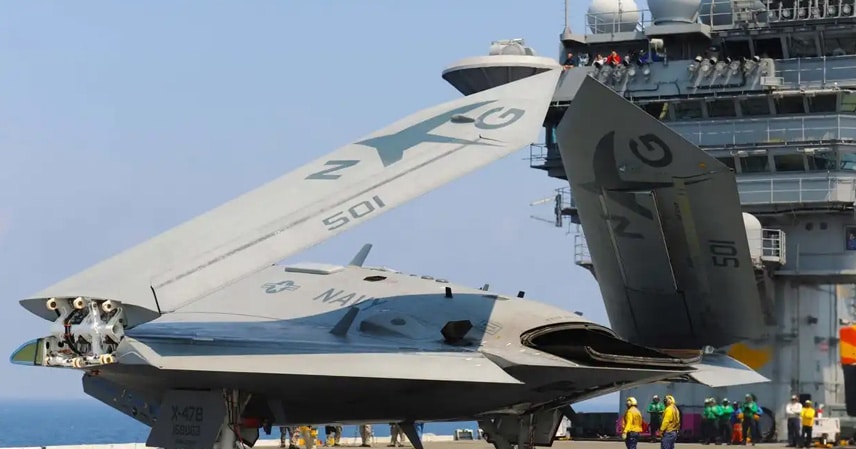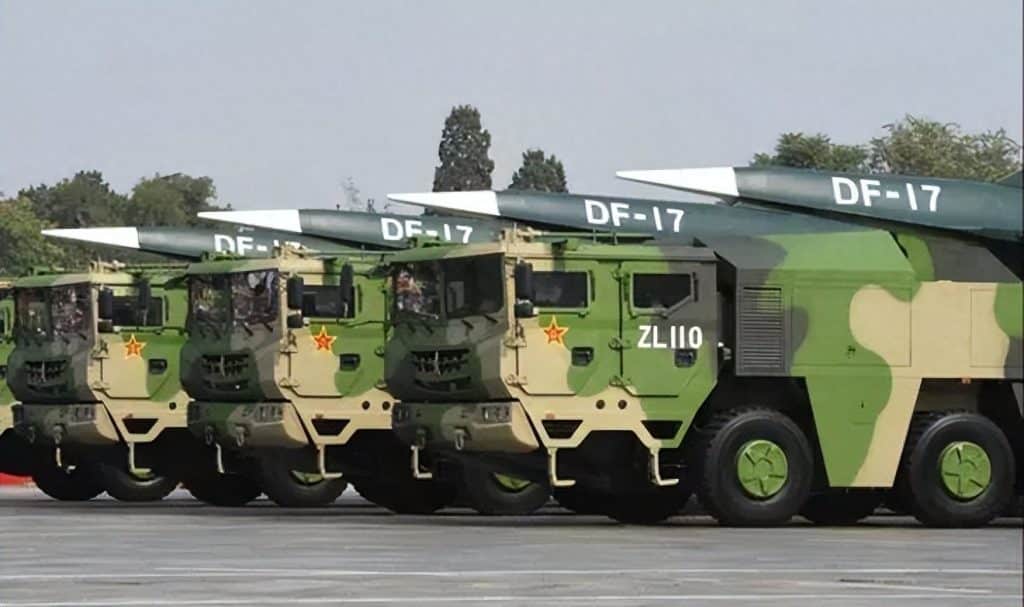The mystery drone that appeared in China’s 2023 military parade has finally been confirmed. Officially designated as the GJ-21, this cutting-edge stealth carrier-based drone is designed for both the Fujian aircraft carrier and the soon-to-be-sea-tested Type 076 amphibious assault ship. Together, they will form a global first: an electromagnetic catapult carrier paired with a stealth combat drone, giving the PLA Navy a truly world-leading configuration.
GJ-21 Confirmed as Carrier-Based Stealth Drone
During the parade, the drone formation was led by the well-known GJ-11 stealth UAV, which has already appeared at multiple airshows. But the larger, unfamiliar drone behind it—with faint markings of “21”—immediately sparked speculation. Many believed it to be the GJ-21, though its exact role was unclear.

That question was answered on September 27, when CCTV officially confirmed that the drone is indeed a carrier-based stealth UAV. Its appearance in the parade signifies mass production and operational deployment, proving that its technology is fully mature.
Reports had already suggested that the GJ-21 had conducted take-off and landing trials on the Fujian carrier, but no official acknowledgment was given. Now, with Fujian having completed tests of three different carrier-based aircraft types under full fuel and weapons load, and with CCTV’s confirmation, it is highly likely that the GJ-21 successfully carried out these trials earlier this year. This paves the way for its eventual deployment on the Type 076 amphibious assault ship, even before that vessel has entered sea trials.
Type 076 Amphibious Assault Ship Nears Sea Trials
Nicknamed the Sichuan, the Type 076 is no ordinary amphibious assault ship. At 40,000 tons displacement, it is comparable in size to France’s Charles de Gaulle nuclear carrier. What makes it revolutionary is its inclusion of an electromagnetic catapult system, the same advanced launch technology used on the Fujian.

The ship recently had its catapult test shelters removed, a strong indication that sea trials are imminent. Once operational, the 076 will be able to launch drones like the GJ-21 at full combat load, enabling sustained long-range strike and surveillance operations.
If the GJ-11 boasts a 1,500 km strike range, analysts predict that the larger GJ-21 could extend this to 2,000 km, providing unmatched reach in the Asia-Pacific. Moreover, by launching drones in continuous waves, the PLA Navy can achieve persistent maritime surveillance, early warning, and strike capability.
A New Era of Carrier-Based Drone Warfare
The GJ-11, already known as the world’s first operational stealth strike UAV, was dubbed a “drone bomber” due to its B-2–like shape, stealth design, and heavy payload. Its ability to penetrate defenses at low altitude makes it a formidable weapon.
The GJ-21 goes further, becoming the world’s first stealth carrier-based strike drone.
- U.S. equivalents fall short: The MQ-25 Stingray is also carrier-capable and features some stealth shaping, but it is designed primarily as a tanker, not a strike aircraft. The X-47B demonstrated strike capabilities but remains a prototype without mass deployment.
- By contrast, the GJ-21 is already mass-produced and fielded, marking another global first for China.
With the Fujian already establishing itself as the world’s only electromagnetic catapult carrier operating stealth fighters, and the Sichuan (076) set to become the first amphibious assault ship to deploy stealth combat drones, China is rewriting the playbook of naval warfare.

Conclusion
The debut of the GJ-21 stealth carrier-based drone signals a seismic shift in naval power projection. By pioneering the integration of electromagnetic catapults and stealth combat UAVs, the PLA Navy has gone from following U.S. innovation to leading the world in new combat systems.
From long-range strike capability to persistent surveillance, the GJ-21 gives China’s navy the tools to dominate the evolving battlefield. The era of the unmanned carrier strike group has arrived—and China is at its forefront.
References:
- CCTV coverage (Sept 27, 2025 broadcast)
- PLA Navy announcements on Fujian and 076 progress
- Open-source defense analyses on GJ-11 and GJ-21 UAVs



